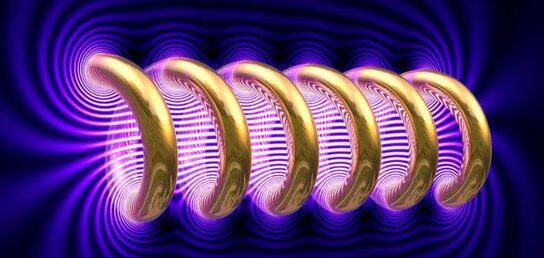Magnetic Intensity The physical quantity that describes the strength and direction of the magnetic field is a vector, commonly denoted by the symbol B, and the international unit is Tesla (symbol T). Magnetic induction is also called magnetic flux density or magnetic flux density. In the physics, the strength of the magnetic field is expressed by the magnetic induction intensity, and the greater the magnetic induction intensity is, the stronger the magnetic induction is. The smaller the magnetic induction intensity, the weaker the magnetic induction.
Magnetic induction methodThe electric field force that the charge receives in the electric field is constant, and the direction is the same as or opposite to the electric field direction at that point. The force of the magnetic field (amperes) at a certain point in the magnetic field is related to the direction in which the current is placed in the magnetic field. When the direction of the current is parallel to the direction of the magnetic field, the amperage to which the current is applied is minimal, equal to zero; when the direction of the current and the direction of the magnetic field When vertical, the current is the most amperometric.
The point charge q is subjected to a force f at a velocity v in a magnetic field. Under the given conditions of the magnetic field, the size of f is related to the direction of charge movement. When v is in a particular direction or opposite to it, the force is zero; when v is perpendicular to this particular direction, the force is maximum, Fm. Fm is proportional to |q| and v, and the ratio is independent of the motion charge, reflecting the nature of the magnetic field itself, defined as the magnitude of the magnetic induction, ie. The direction of B is defined as the direction in which the right hand spirals forward when the direction of the maximum force Fm from the positive charge is changed to the charge movement direction v. After B is defined, the force that the moving charge receives in the magnetic field B can be expressed as F=QVB, which is the Lorentz force formula.
In addition to using the Lorentz force to define B, B can also be defined according to the amperage df=Idl×B to which the current cell Idl is subjected in the magnetic field, or according to the moment M=m×B in which the magnetic moment m is applied to the magnetic field. B, three definitions, similar methods, completely equivalent.

B=F/IL=F/qv=E/v=Φ/S
F: Lorentz force or Ampere force;
q: the amount of charge;
v: speed;
E: electric field strength;
Φ (=ΔBS or BΔS, B is magnetic induction intensity, S is area): magnetic flux;
S: area;
L: The length of the conductor in the magnetic field.
Definition: F=ILB.
Expression: B=F/IL.

Applying the principle that the energized wire is forced in the magnetic field can make a sensitive current balance. According to the moment balance condition, the energized wire is measured in the uniform magnetic field and the magnetic induction intensity is measured.
2, the balance of forceApply the principle that the energized line is balanced in the magnetic field, establish the equilibrium equation according to the equilibrium condition, and then obtain the magnetic induction intensity.
3, kinetic methodApplying the principle of stress in the magnetic field through the power line, according to the Newton's laws of motion to establish dynamic equations, in order to determine the magnetic induction intensity.
4. Functional relationship methodThe magnetic field has energy, which is related to the intensity of magnetic induction; and work is a measure of energy conversion. Therefore, as long as the relationship between work and magnetic field energy is established, the magnetic induction intensity can be obtained.
5, magnetic deflection methodWhen a charged particle perpendicularly enters a uniform magnetic field at a speed perpendicular to the direction of the magnetic field, it will deflect and make a uniform circular motion. By studying the trajectory, relevant laws can be used to determine the magnetic induction intensity.
6, Hall effect methodThe Hall effect principle is used to conveniently and quickly measure the magnetic field strength of a magnetic field.
7. Tom’s methodThe magnetic induction intensity of the magnetic field was measured using an experimental apparatus of Tom's biometric electronic load.
8, electromagnetic induction methodWhen the magnetic flux changes, the magnetic flux changes, and the law of electromagnetic induction tells us that an induced current will be generated in the coil, and the coil or conductor rod will hinder the movement of the coil and the conductor rod to study its force and motion, according to the physics related to magnetic induction. The law of magnetic induction can be obtained.
9. Rocking rope power generation methodExperiments have shown that two ends of a copper core twisted pair with a length of about 15m are connected to a sensitive ammeter and pulled apart to form a long circuit. Two classmates standing face-to-face shake the half-loop wire at a rate of 4 to 5 turns per second like a rope. As the wire cuts the earth's magnetic field, there is induced current in the loop, and the maximum value of the current indicated by the ammeter pointer can reach O.3.
Shenzhen Kaixuanye Technology Co., Ltd. , https://www.iconlinekxys.com